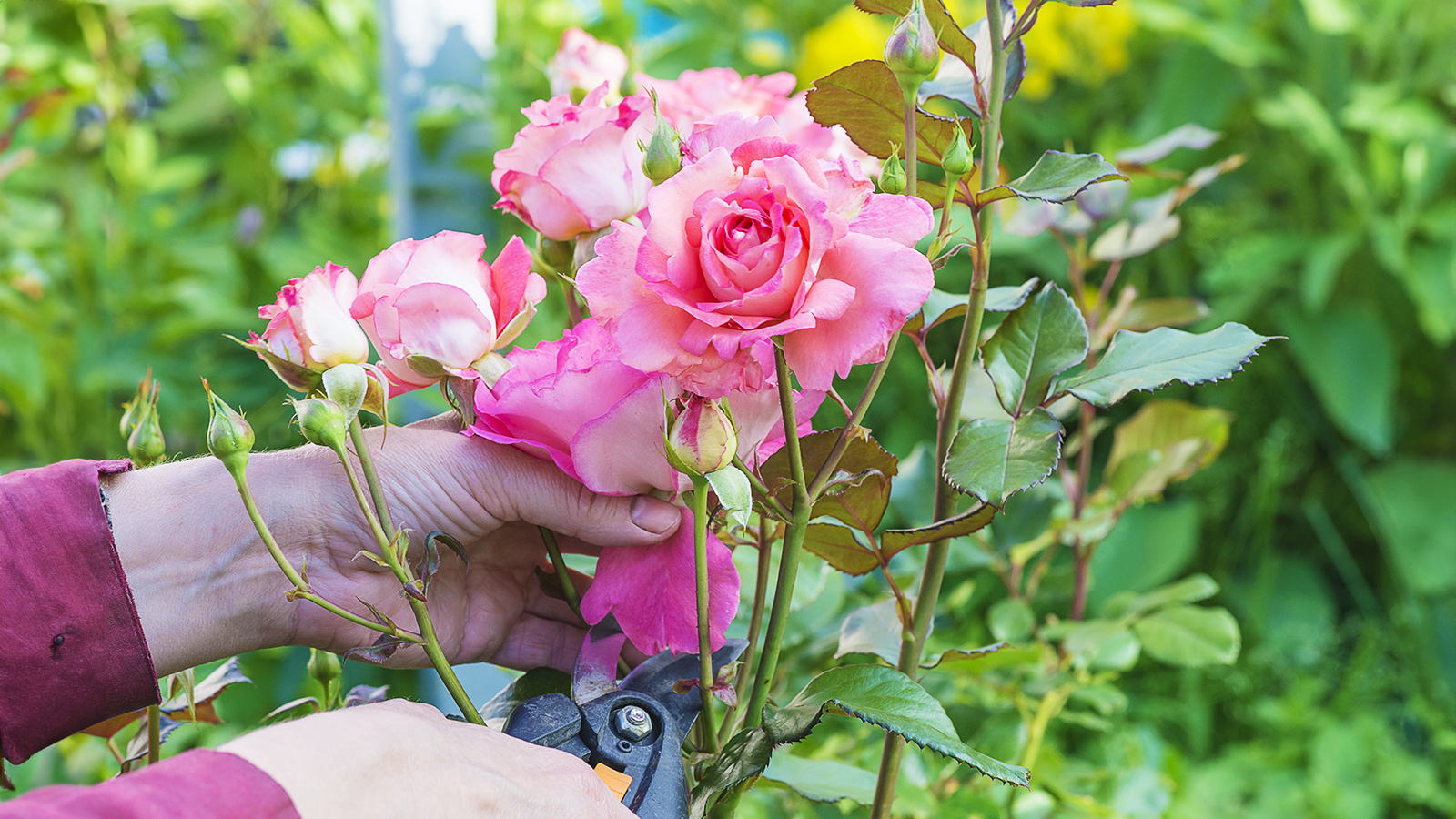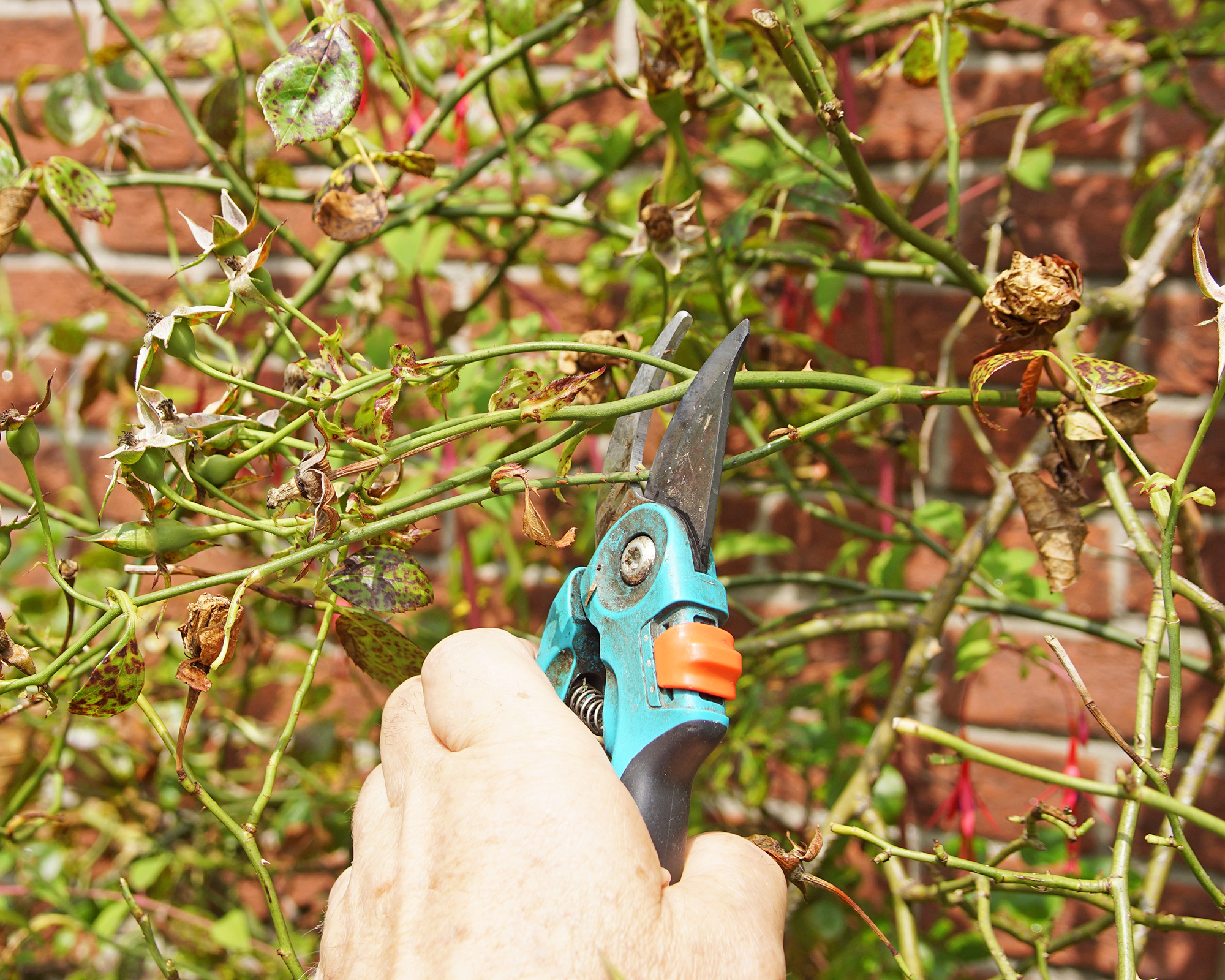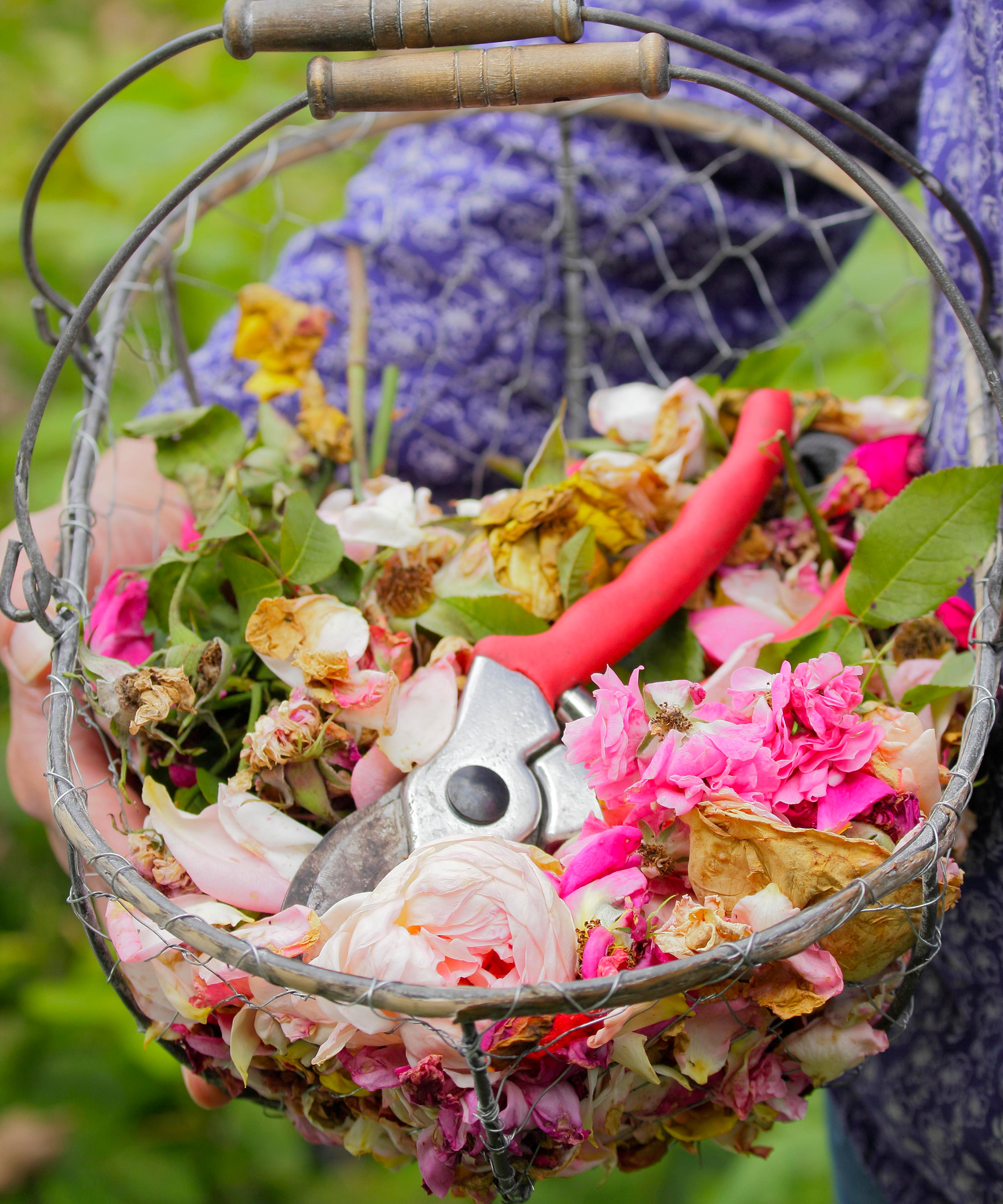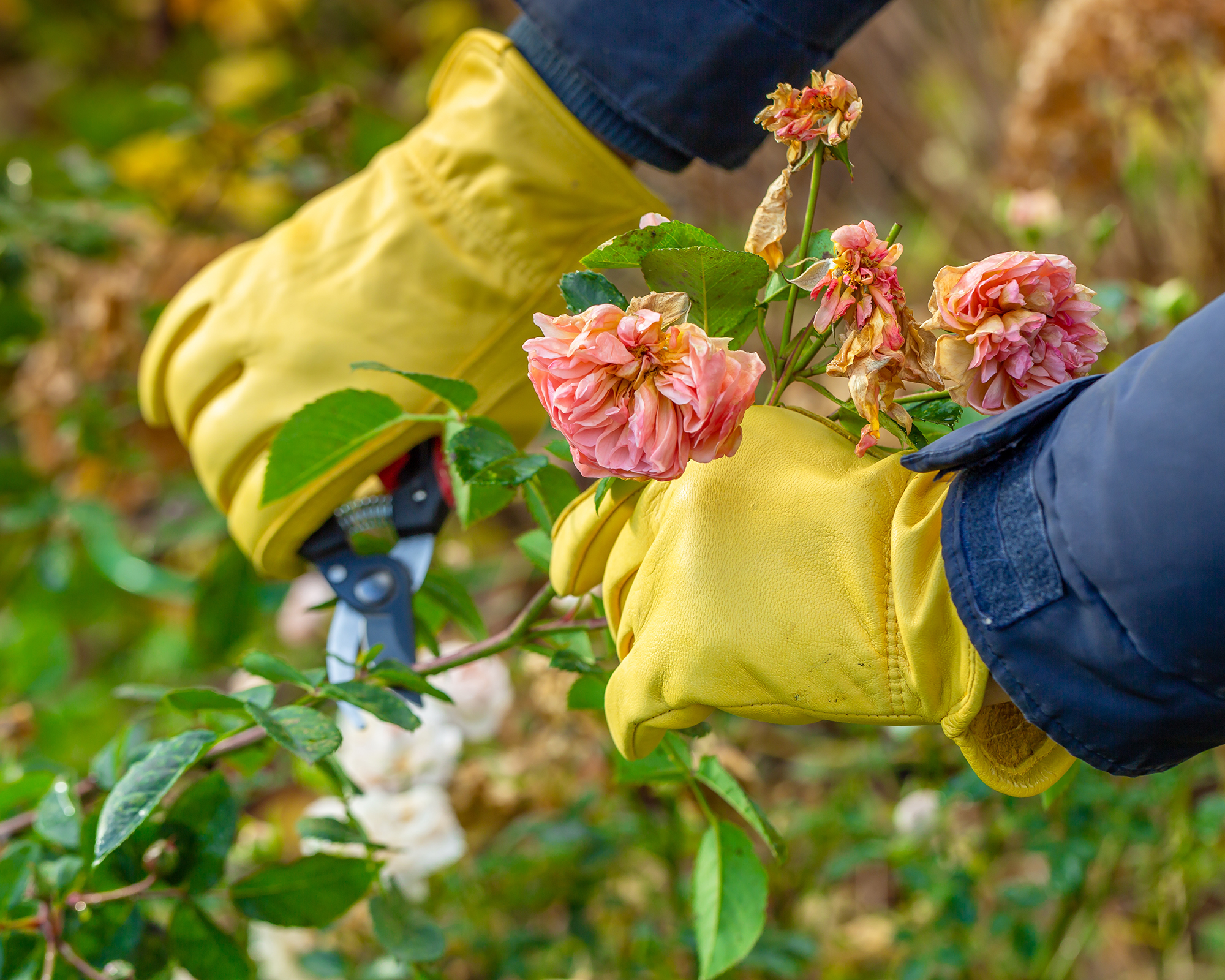How To Prune Roses In Summer – And Why Timing Is Everything For Better Blooms
Tidy up roses by giving them a summer trim that will reinvigorate plants with healthy new growth and another flush of beautiful flowers.


Heavier pruning of roses is usually done in late winter or early spring, when the plant is dormant. However, lightly pruning roses in summer is also beneficial to help manage disease, encourage more blooms, and keep plants healthy. It also helps to tidy things up at a time of year when the garden has grown out of control.
Knowing how to prune roses correctly is vital at any time, but plants are less forgiving in the summer. Getting too snip-happy in the hotter months can lead to damage and stress that weaken the plant, making it more susceptible to common rose diseases.
So, before you dust off your pruners and don your gardening gloves, here's everything you need to know about trimming roses in summer.
Why Prune Roses in Summer?
If you know how to grow roses, you can enjoy these beautiful, classic flowers in your garden for years. Keeping roses happy, healthy, and blooming requires getting the lighting right, fertilizing, watering, and, of course, pruning.
While you’ll do your heavier pruning at another time, there are several good reasons for lightly and thoughtfully pruning roses in summer:
- Roses are very susceptible to disease, and pruning lightly in summer can reduce the risk of disease setting in or spreading.
- Light trimming now keeps your rose shapely and prevents legginess.
- For repeat or continuous bloomers, trimming lightly after the first summer flush will encourage the next flowering.

Can You Prune Climbing Roses in Summer?
Yes, you can and should prune climbing roses lightly in summer. As with rose bushes, this gentle summer trim will keep your climbing rose healthy, shapely, and blooming.
If you are growing rambling roses, it's even more important to prune in the summer, as these varieties flower on the previous year's growth. If you wait until spring to prune, then you will be removing the potential for new blooms. Wait until the plant has finished flowering before carrying out your main annual prune.
Sign up for the Gardening Know How newsletter today and receive a free copy of our e-book "How to Grow Delicious Tomatoes".
When to Prune Roses in Summer
Knowing when to prune roses is essential to doing this gardening chore correctly. The best time for summer pruning is after the first flush of flowers fades. Even with continuous bloomers, there will be a period when the bushes are not blooming much or at all. This is when you can prune to reinvigorate them and prepare for a second flush.

How to Prune Roses in Summer
Summer pruning should first and foremost be light. Avoid cutting roses back in summer, as heavy pruning can put a lot of stress on a plant when high temperatures are already stressing it.
The first thing to do when pruning in summer is to deadhead spent rose blooms. Use sharp, clean shears to minimize damage. Felco Snips, available at Amazon, are perfect for deadheading roses. Cut under the dead flowers and just a little above the first cluster of leaves. Look for an outward-facing bud. Cutting at outward-facing buds helps open up the interior of the rose bush, increasing air circulation and reducing disease risk.
Make a 45-degree angled cut just above the bud. The angle should slant downward away from it. Make the cut so that there is about one-quarter of an inch above the bud. Any shorter, and you risk the wound not healing.
Deadheading is the most important aspect of summer rose pruning, but you can make a few other strategic and light cuts now. Remove any canes that look diseased, damaged, or broken. You can lightly trim out crossed canes or suckers if it looks like the bush could benefit from being more open for better airflow.
Fiskars' bypass pruning shears, available at Amazon, are a great choice for more substantial rose trimming. Switch to the brand's bypass loppers when tackling old hard canes and reaching up to prune climbing roses.

Pruning Different Types of Roses
The above are good general guidelines for summer rose pruning, but it’s important to also consider the types of roses you have before tackling this chore. Deadheading is most important if you have a type of rose that is considered a repeat or continuous bloomer.
Repeat bloomers will flower in late spring or early summer and then again once or maybe twice later. Continuous bloomers are supposed to flower all summer, but they tend to have lower flowering periods during which you can reinvigorate them with a light trim.
Even if you grow an older-style rose bush that blooms just once, it can benefit from deadheading and a light trim. This will keep it healthy and promote strong growth for the following year.
Knock-out roses are so-called ‘self-cleaning’ roses. They are supposed to drop their spent flowers, so you do not have to deadhead them. It’s best to check them anyway and be sure no dead flowers are hanging on.
Many climbing roses repeat bloom and benefit from reinvigorating trims in summer. These types of roses are also the largest and can take more pruning and trimming to maintain a reasonable size and to keep them looking tidy. An overgrown climbing or rambling rose can quickly look messy and out of control.
In summer, deadhead your rambling and climbing roses as you would shrub roses. You can also trim out diseased branches and do some gentle thinning to shape and keep the vine small. Use the same types of angled cuts as for shrub roses.
Summer rose pruning is a chore you shouldn’t overlook. While this isn’t primetime for rose pruning, it is a good time to encourage new flowers, manage or prevent disease, and keep all types of roses healthy and thriving.

Mary Ellen Ellis has been gardening for over 20 years. With degrees in Chemistry and Biology, Mary Ellen's specialties are flowers, native plants, and herbs.